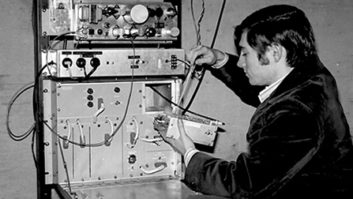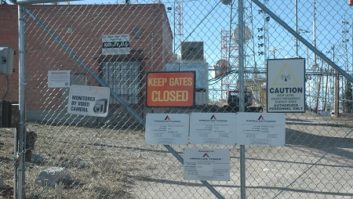A prominent broadcast engineering firm is asking the Federal Communications Commission to take a closer look at two areas within the AM revitalization order.
In reply comments, du Treil, Lundin & Rackley addresses several wide-ranging issues, including potential changes to Class A protections as well as protections to Class B, C and D stations.
Principal Ronald D. Rackley wrote in support of changes proposed in the Further Notice of Proposed Rulemaking, with the important exception of changes to Class A nighttime and “critical hours” protection standards.
Rackley said the firm stands with the AM Radio Preservation Alliance regarding Class A nighttime and critical hours. He said critical hours protection should not be eliminated for Class As, and suggested a compromise for critical hours at the 0.5 mV/m level that would recognize modern day noise and interference in our comments.
“We believe that such protection, at the 0.5 mV/m level, will preserve the principle of ‘service over an extended area’ for Class A stations in comparison with other classes of station — without unnecessarily sacrificing primary service that should be possible for other stations because of obsolete requirements for protection of intermittent (in the daytime) and secondary (at night) Class A station contours,” Rackley wrote.
Also, he argues, interference at night is overstated when compared to daytime interference. Nighttime interference protection in the United States is based upon a 10 percent-of-the-time skywave propagation model and, therefore, is exaggerated relative to how things are done in the rest of the world. Outside of North America, a 50 percent-of-the-time skywave propagation model is used to calculate interference, he noted.
In reality, good reception is possible in many locations much of the time within secondary nighttime coverage areas of Class A stations despite the presence of calculated or “on paper” interference levels within areas overlapped by 0.025 mV/m 10 percent-of-the-time contours from other stations, the firm said.
Rackley said it is clearly time to eliminate 0.1 mV/m protection requirements for Class A stations, for both daytime groundwave and critical hours propagation modes, from FCC rules. #8220;This will have the effect of allowing improvement in daytime primary signal coverage of other classes of station instead of continuing to protect intermittent 0.1 mV/m service of Class A stations.”
However, regarding changes to daytime protection of Class B, C and D stations, the engineering firm said comments by the alliance contained “false and misleading information” about interference potential of the service and interfering groundwave contour changes that are proposed in the FCC’s FNPRM.
It emphasized that it was not suggesting the alliance intended to be misleading but said it used an incorrect definition of interference on the maps of Exhibit Q in its comment filing and in references to groundwave-to-groundwave interference elsewhere in its comments. Similar comments questioning the alliance’s interference definitions were filed with the FCC by Crawford Broadcasting last week.
“The end result is that much larger areas are claimed to receive interference, under the FCC’s proposed plan to change the definitions of groundwave service and interfering field strength levels, than will actually be the case,” Rackley wrote.
The group incorrectly labeled all areas within the intersection of the defined service and interfering contours as an interference area, the firm said.
“There is a strong consensus among many consulting engineers who are experienced experts in radio frequency propagation and signal coverage analysis that the daytime protected contour level needs to be increased above the present 0.5 mV/m level.”
Instead, Rackley said it would be a fair compromise to have the protection standard for 2 mV/m daytime groundwave service specify avoidance of overlap with co-channel interfering signals of 0.05 mV/m. The engineering firm urged the FCC to adopt this standard for daytime protection along with the other changes proposed in the FNPRM.
“To have a proper perspective on whether concern over station-to-station interference should be the primary consideration for daytime protection changes that are adopted in this rulemaking, one needs only to consider this question: How often do listeners to AM radio stations in the daytime wish to tune to another station, or turn off the radio, because of irritating buzzing and noise instead of because they can hear programming of another station in the background?” Rackley asked.
The firm also replied to comments from DTS and the broadcast consulting engineering firm of Cohen, Dippell and Everist.
Reply comments on the AM revitalization order were due to the FCC on April 18.










